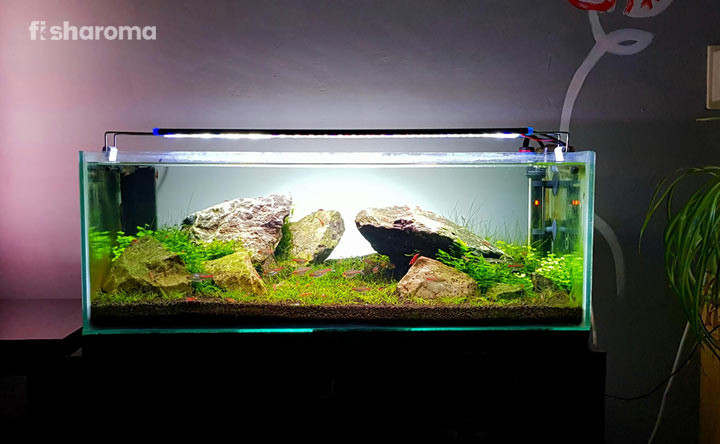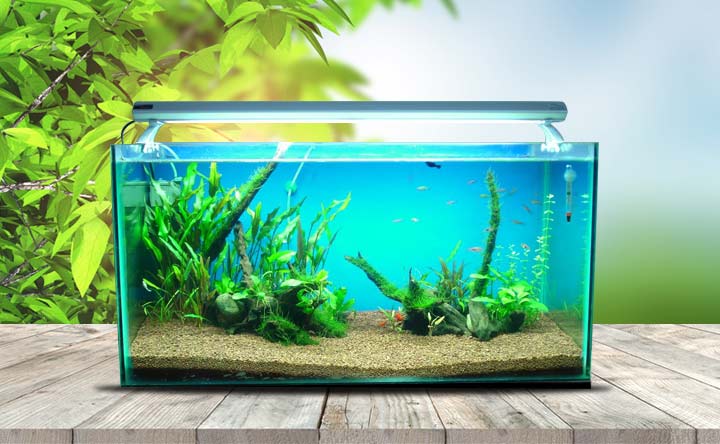How to Lower pH in Your Aquarium (Complete Guide for Fishkeepers)

Fishkeeping can be your hobby but remember it is your responsibility to know the requirements of your pet fish if you encourage this hobby. Maintaining the parameter of the tank water is necessary, for example, it is essential to maintain the right pH level in your aquarium. This will keep your pet fish safe. If the water temperature, hardness and pH level is not maintained, then it may harm your pet fish with various diseases. So, know how to lower pH in your aquarium water, and keep the aquatic species safe.
What is pH and Why It is Important to Lower pH?
Most of the aquarists talk about balancing the pH level in the water or testing it every week. Do you know what is pH? The term pH stands for the ‘Power of Hydrogen’. ‘H’ is the atomic symbol of the Hydrogen element, and it is capitalized. The ‘P’ means the power.
The pH level is the acid-based solution that ranges from 1-14. pH has no static condition, and it changes for every fish breeds and other aquatic species of freshwater and saltwater. It is necessary to lower the pH level in the water of the aquarium because some fish are uncomfortable in dwelling in high pH water.
Proper pH Level of the Water for Freshwater Fish
There are various freshwater fish that are often kept by aquarists in their tank. Have a look at some common fish breeds and the pH level for their tank water.
- Angelfish: 6.5-7.0
- Goldfish: 7.0-7.5
- Clown Loach: 6.0-6.5
- Hatchetfish: 6.0-7.0
- Harlequin Rasbora: 6.0-6.5
- Plecostomus: 5.0-7.0
- Neon Tetra: 5.8-6.2
- Tiger Barb: 6.0-6.5
- Silver Dollar: 6.0-7.0
- Zebra Danio: 6.5-7.0
Tips to Lower pH in Aquarium
Sudden change in the pH level of the water can be fatal for most of the fish. With the rise of pH, the toxicity of chemicals such as ammonia increases. So, the pH level of the water in the fish tank should be tested once a month to minimalize the risk of your fish contracting various diseases. Here are some tips to lower pH in the aquarium.
Monitor the pH Level
Be vigilant about the parameter of the water in the tank if you have problems with pH in your aquarium. Buy the pH and aquarium test kit to check the hardness, pH level and the temperature of the water in the aquarium.
The pH should be tested always every two weeks. Remember to always test the pH at the same time of the day, otherwise, the pH level may fluctuate.
Clean Your Fish Tank
Cleaning your aquarium on a regular basis is the best way to reduce ammonia, as it is one of the main reasons for the increase of pH level in the water. Moreover, cleaning the tank is necessary because it reduces the leftover foods and the fish wastes from the tank, and helps in maintaining the quality of the water. If you clean your aquarium, then it will help you control the infection and keep your pet fish away from life-threatening diseases. Cleaning the tank and changing 10% of the water every week will help you lower the pH level in the water.
Upgrade the Filter of Your Aquarium
The filtration system plays an important role in destroying the bacteria in the water of the tank, and upgrading the filtration system in your aquarium can lower the pH of the aquarium water. Make sure that you should remove the debris from the biofilter and eliminate the clogs.
Reduce Changing the Decorations and Substrate
Avoid the frequent changes in the décor and design of your aquarium Adding new decorations in your pet fish home is a good idea, but regular changes may harm those fish breeds who require a lower pH level in the water. Also, don’t add shells, lime rocks, minerals or dyes in the tank because these things can increase the pH level of water and become harmful for the health of your pet fish.
Reduce Aeration Process
If you have oxygen in your fish tank, there will be carbon dioxide also, and that will lower the pH level in the tank. The bubble wands, power heads, and air stones will increase the aeration in the aquarium. But you need to decrease the aeration process to lower the pH in your aquarium. So, stop increasing the bubble wands and air stones in the fish tank.
Try Putting Vinegar in the Tank
As per the scientific research, vinegar can lower the pH level of hard water. Vinegar contains acetic acid which releases hydrogen ions through the ionization process. Moreover, the bacteria and other microorganisms in your aquarium metabolize the acetate. Balance the level of the vinegar in the tank to lower the pH level.
Add Indian Almond Leaves (Catappa leaves)
Catappa or Indian Almond Leaves are the natural solutions to lower the pH level of the water. When the leaves get decomposed in the tank water, it releases tannins. Soak the leaves overnight and add the water to the tank. Almond Leaves also has antibacterial properties that protect the fish and other aquatic species from harmful bacteria.
Use Reverse Osmosis Process
Reverse Osmosis process helps in purifying the water in the fish tank by using a semipermeable membrane. This membrane allows passing the fine molecules of water that filter out 99% impurities in water such as pesticides, arsenic, toxins and heavy metals. This will also help you maintain a stable pH level in the water.
Add Peat Moss in the Aquarium
Now, you may ask how to lower pH in your aquarium with the help of a mere Peat Moss. Peat Moss releases tannic and gallic acids into the water, and these acids reduce the hardness and pH of the water. Keep in mind that adding a Peat Moss in the tank is a fantastic way to lower the pH level of water. Don’t get scared if the water of your tank changes into yellow color because the color has no side effects.
Keep Driftwood in the Fish Tank
Driftwood is not only added for decorative purpose, but it can also change the color of the tank water and reduce the pH level of the water. However, always put such driftwoods in your tank that are designed for the use of the aquarium. Select clean driftwood for your aquarium.
Know More about Maintaining a Fish Tank
Along with the idea of lowering the pH level in the tank water, you may also go through a few other ways to maintain a fish tank. Take a look at the various ways of cleaning and decorating a fish tank.
- Aquarium Decoration Ideas: Like your home, a fish home should also be decorated with various decorations. Know the ideas to decorate your aquarium for your pet fish.
- Tips to Clean a Fish Tank: For the good health of your pet fish, clean the walls and decorations of the aquarium, and replace the tank water every week. To know more, go through the entire article.









